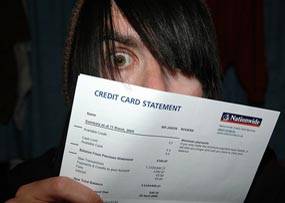 Americans are faced with a constant set of choices — cash or charge, paper or plastic, regular or decaf. And when we receive a new credit card, we are again faced with the choice of receiving or statements by mail or viewing them online. So how should you decide?
Americans are faced with a constant set of choices — cash or charge, paper or plastic, regular or decaf. And when we receive a new credit card, we are again faced with the choice of receiving or statements by mail or viewing them online. So how should you decide?
The case for paper statements
In considering whether to receive paper statements, it helps to remember that all banks will allow you to view your statement online whether or not you choose to have a paper statement sent to you. So the question is whether you like to receive a paper statement in addition.
Receiving a paper statement in the mail is a tangible record of your charges and a concrete reminder that you have a bill to pay. Holding the paper record, it is easy to circle charges for one reason or another. For example, some charges may be business deductions, while others may be questionable expenses that need to be researched.
But the real beauty of a paper statement is its simplicity. In contrast, banks don’t actually send electronic statements via email, they merely notify recipients that their statement is ready to be viewed online. This requires cardholders to click on a link, enter a username and password, and then navigate a bank’s website to find their statement. This task is multiplied by the number of credit cards held, so that cardholders have a much larger administrative burden than merely opening a few envelopes. And what’s worse, it is much easier to lose an electronic statement under a pile of emails than it is to lose a paper statement within a much smaller delivery of mail.
[Free Resource: Check your credit score and report card for free before applying for a credit card]
 The argument for online statements
The argument for online statements
The entire premise of a credit card is that it allows us to complete transactions without exchanging paper currency or checks. Yet most credit card users continue to accept paper statements by default. And as the world becomes more digitally connected, it seems that credit card statements would be the perfect candidate to go paperless.
In addition, online statements can be easily manipulated to pull out different features within the data. For example, cardholders could track their spending within certain categories, or graph their spending habits over time.
Other options
As with most choices, there are more than two options. Your bank may feature an e-billing service for customers. This process is different than having the bank that issues your credit card send you notification that your statement is available to be viewed on their website. Instead, you log into your checking account online, and the actual bills are delivered to you. Nevertheless, you still have to remember to log into your bank account, view, and pay your bills, but at least they are all in one place.
Another option is to set up automated payments from a bank account to a credit card. Cardholders whose payments cover their entire balance should make sure that the payment occurs on or just before the due date. Those who carry a balance should try to make payments as early as possible. In either case, cardholders can then check their online statements regularly to track their spending and to spot any fraudulent activity.
By understanding all of the advantages and drawbacks of paper and online statements, cardholders can retrieve their billing information in the best form to meet their needs.
[Credit Cards: Research and compare credit cards at Credit.com]
Image: Jason Rogers, via Flickr
You Might Also Like
March 11, 2021
Personal Finance
March 1, 2021
Personal Finance
February 18, 2021
Personal Finance






